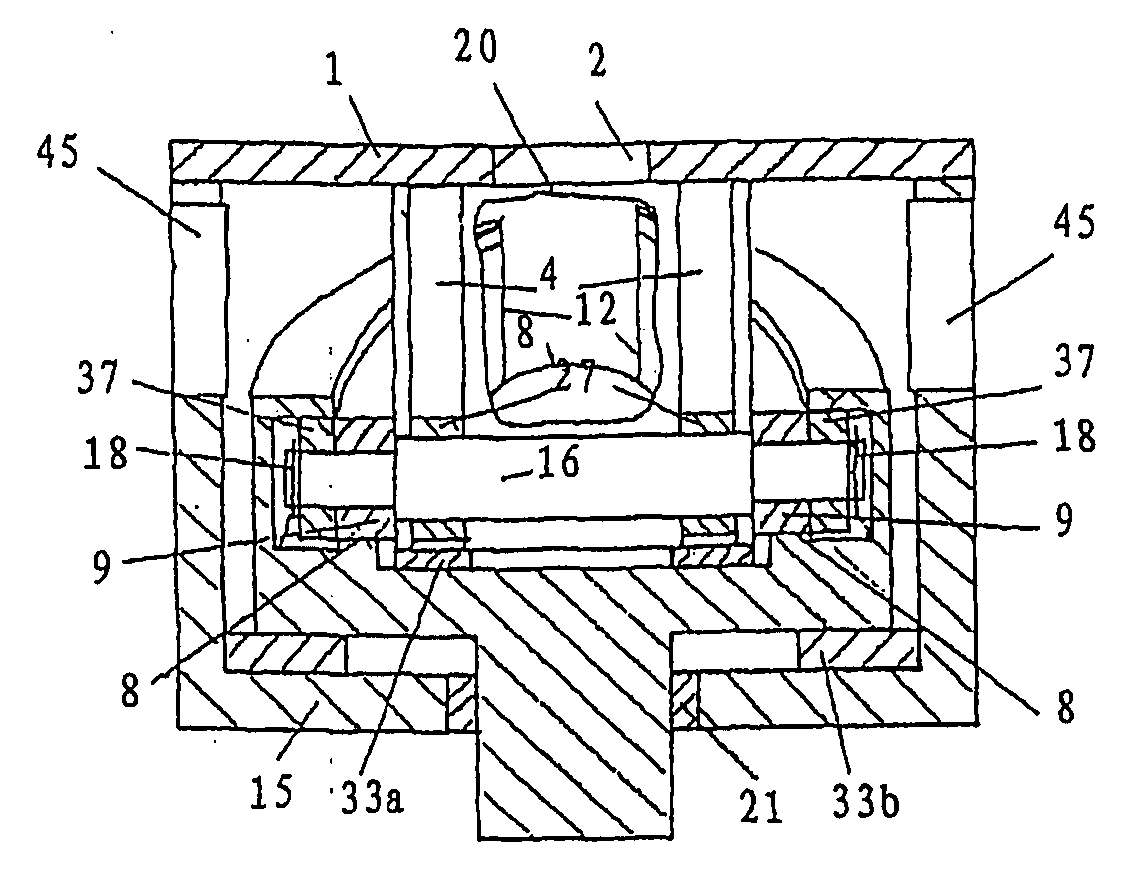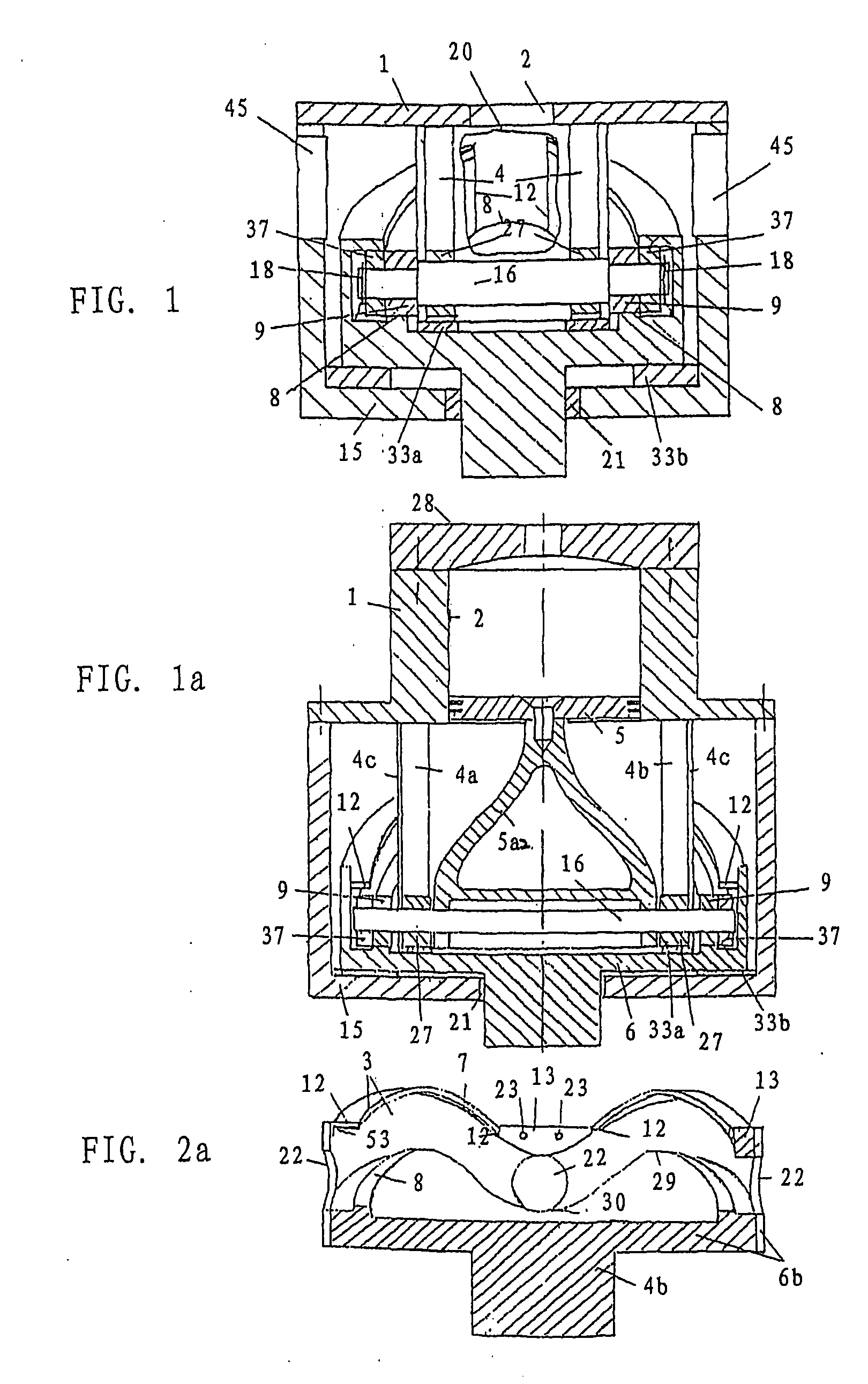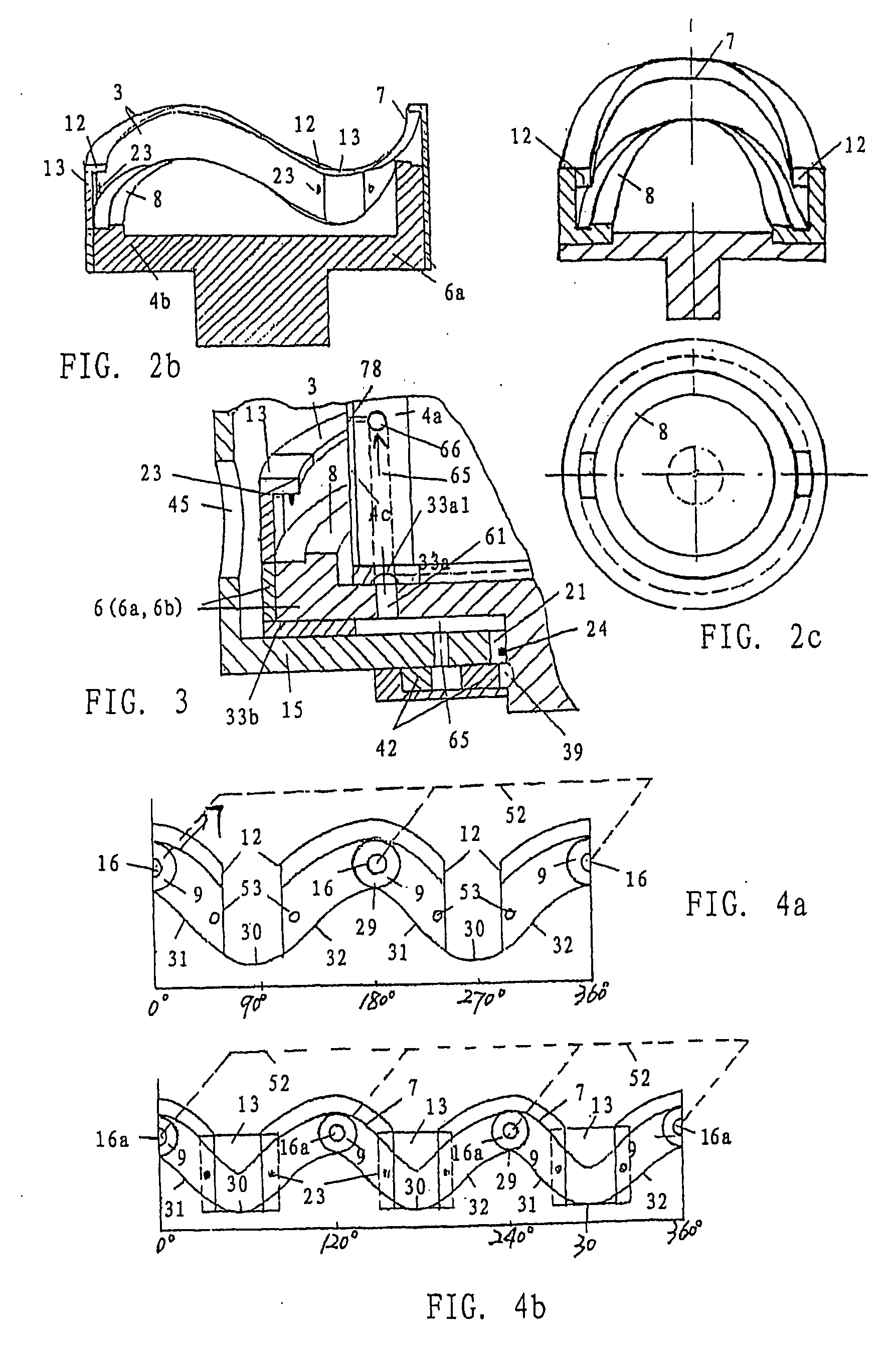Power Transmission Mechanism for Conversion Between Linear Movement and Rotary Motion
- Summary
- Abstract
- Description
- Claims
- Application Information
AI Technical Summary
Benefits of technology
Problems solved by technology
Method used
Image
Examples
embodiment 2
[0084] A single-cylinder and four-stroke internal combustion engine comprising a power transmission mechanism having an internal groove cam is shown in FIG. 11. The engine comprises an internal groove cam 6, a cylinder cover 28 on which a part of members forming the valve system, such as a valve and a camshaft and etc., are mounted, a cylinder 1 having a cylinder opening 2, a piston 5 and a piston rod 5a2a, two primary rollers 9, two secondary rollers 37, two guiding rollers or sliding blocks 27, a roller shaft 16, two fixed guide rails 4, a cam box 15. The internal groove cam 6 is provided in the cam box 15. The cylinder 1 having the cylinder cover 28 is fixed to the cam box 15. Two primary rollers 9 and two secondary rollers 37 are disposed near the two ends of the roller shaft at the positions corresponding to the circumferential cam contour so that they are received in the groove of the internal groove cam through two slots 12 in the upper circumferential cam contour of the inte...
embodiment 3
[0086] A double-cylinder and four stroke inline internal combustion engine comprises a power transmission mechanism having an internal groove cam. The engine comprises an internal groove cam 6 or 6b, a cylinder cover 28 on which a part of members forming the valve system, such as a valve and a camshaft and etc., are mounted, a cylinder 1 having two cylinder openings 2 disposed at the positions where one circumference 50 intersects the bi-sectors 67, two pistons 5, two piston rods 5a, two primary rollers 9, two secondary rollers 37, two guiding rollers or sliding blocks 27, a roller shaft 16, two fixed guide rails 4, a cam box 15. The internal groove cam 6 is provided in the cam box 15. The cylinder 1 having the cylinder cover 28 at the upper part thereof is fixed to the cam box 15. The lower parts of the two piston rods 5a fixed to two pistons 5 in the two cylinder openings 2 of the cylinder 1 are mounted on the roller shaft 16 so that the two pistons 5 and the roller shaft 16 form ...
embodiment 4
[0087] A four-cylinder and four-stroke inline internal combustion engine comprises a power transmission mechanism having an internal groove cam as shown in FIG. 13. The engine comprises an internal groove cam 6 or 6b, a cylinder cover 28 on which a part of members forming the valve system, such as a valve and a camshaft and etc., are mounted and having four combustion chambers, a cylinder 1 having four cylinder openings 2 linearly arranged at the four positions where two circumference 50, 51 intersects the bi-sectors 67, four pistons 5, four piston rods 5a, two primary rollers 9, two secondary rollers 37, two guiding rollers or sliding blocks 27, a roller shaft 16, two fixed guide rails 4, a cam box 15. The internal groove cam 6 is provided in the cam box 15. The cylinder 1 having the cylinder cover 28 at the upper part thereof and linearly arranged with four cylinder openings 2 is fixed to the cam box 15. The lower parts of the four piston rods 5a fixed to the four pistons 5 in the...
PUM
 Login to View More
Login to View More Abstract
Description
Claims
Application Information
 Login to View More
Login to View More - R&D
- Intellectual Property
- Life Sciences
- Materials
- Tech Scout
- Unparalleled Data Quality
- Higher Quality Content
- 60% Fewer Hallucinations
Browse by: Latest US Patents, China's latest patents, Technical Efficacy Thesaurus, Application Domain, Technology Topic, Popular Technical Reports.
© 2025 PatSnap. All rights reserved.Legal|Privacy policy|Modern Slavery Act Transparency Statement|Sitemap|About US| Contact US: help@patsnap.com



